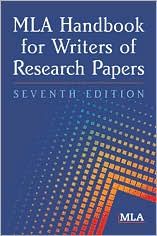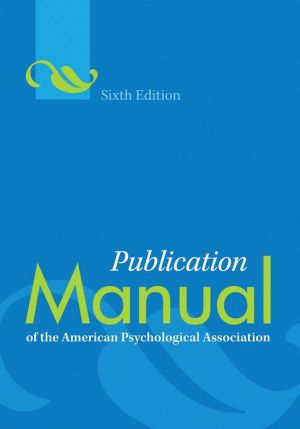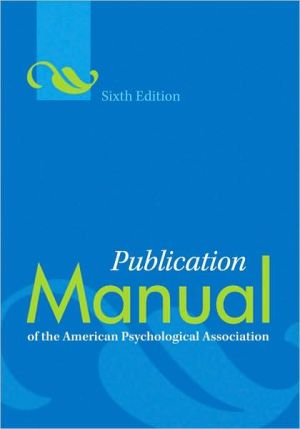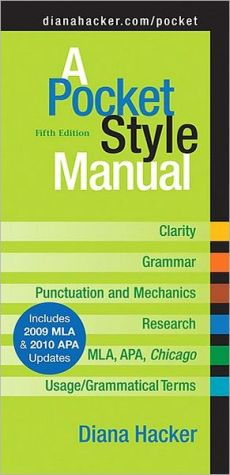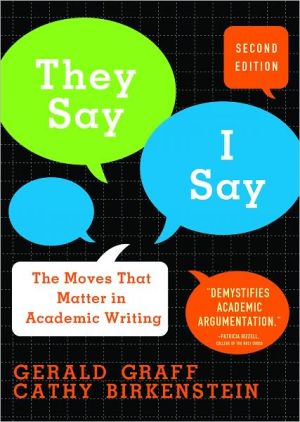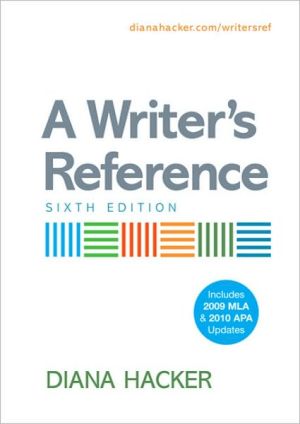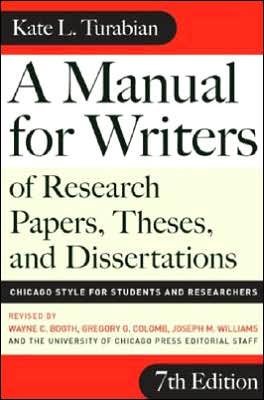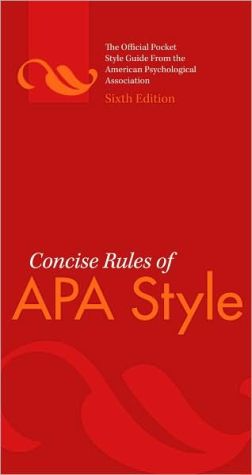MLA Handbook for Writers of Research Papers
Widely adopted by universities, colleges, and secondary schools, the MLA Handbook gives step-by-step advice on every aspect of writing research papers, from selecting a topic to submitting the completed paper. For over half a century, the MLA Handbook is the guide millions of writers have relied on.\ The seventh edition is a comprehensive, up-to-date guide to research and writing in the online environment. It provides an authoritative update of MLA documentation style for use in student...
Search in google:
The MLA Handbook is published by the Modern Language Association, the authority on MLA documentation style. Widely adopted in high schools, colleges, and publishing houses, the MLA Handbook treats every aspect of research writing, from selecting a topic to submitting the completed paper. The expanded, revised, and redesigned sixth edition of the Handbook is a complete, up-to-date guide to documentation style and online research. Library Journal Now a standard for students throughout the U.S., the original style sheet was published in 1951 and the first edition in book form appeared in 1977. This newest edition has been expanded to cover electronic searching methods, using computers to write research papers, and citing electronic publications. An excellent section on library use clearly explains paper and online catalogs. While there is no comparison of different word-processing programs, computers are touted as making the research writer's job much easier by combining steps and allowing movement between outlines and drafts. The new section on citing electronic formats is done well and with common sense; more than once, the reader is told that if complete information cannot be found, cite what is available. This new edition of a standard style handbook should be in every library.-Lisa J. Cochenet-Cihlar, Winfield P.L., Ill.
\ Library JournalThis revision to the 2003 edition incorporates recent changes to accepted language and punctuation rules. It likewise addresses developments made by technology's rapid advance. Unlike its more complex cousin, the MLA Style Manual, this edition is geared toward secondary and undergraduate researchers and offers thorough explanations of research basics as well as essential annotated diagrams, whenever applicable. The slender paperback offers a fully searchable online component that remains available for the edition's lifespan.\ \ —Savannah Schroll Guz\ \ \ \ \ Library JournalGibaldi has been affiliated with the Modern Language Association's (MLA) Book Publishing and Research Program since 1976 and has been involved with every edition of the MLA Handbook. This classic tool for humanities scholars is a collaborative effort by MLA staff members and scholars, especially the Committee on Computers and Emerging Technologies in Teaching and Research. Core guidelines for formal research and writing are retained from earlier editions, but new rules have been developed for citing electronic material. Some sections have been expanded, and new summaries provide quick reference for key ideas, from selecting a topic to writing drafts. At the request of MLA members, an entire chapter addresses fundamental issues of academic honesty for a generation that has come of age amid Napster lawsuits and professional journalistic scandals. Plagiarism is defined in detail, along with examples of instances when source documentation is not needed and examples of copyright infringement. There is a new section on full-text databases and a revised section on evaluation of Internet resources for quality information. The "Citing Electronic Publications" section is more user-friendly and is now enhanced with annotated illustrations. Needed updates will be online at www.mla.org, but there is a growing demand for the entire content of this handbook to be available online as an electronic book. Essential for every high school and post-secondary library.-Betty J. Glass, Univ. of Nevada, Reno Copyright 2003 Reed Business Information.\ \ \ Library JournalNow a standard for students throughout the U.S., the original style sheet was published in 1951 and the first edition in book form appeared in 1977. This newest edition has been expanded to cover electronic searching methods, using computers to write research papers, and citing electronic publications. An excellent section on library use clearly explains paper and online catalogs. While there is no comparison of different word-processing programs, computers are touted as making the research writer's job much easier by combining steps and allowing movement between outlines and drafts. The new section on citing electronic formats is done well and with common sense; more than once, the reader is told that if complete information cannot be found, cite what is available. This new edition of a standard style handbook should be in every library.-Lisa J. Cochenet-Cihlar, Winfield P.L., Ill.\ \ \ \ \ BooknewsThe authoritative guide to research and scholarly writing at the high school and undergraduate levels. Updates the 1995 edition with new resources throughout, as well as a toolbox for online research and expanded MLA formats for documenting online sources. Annotation c. Book News, Inc., Portland, OR (booknews.com)\ \ \ \ \ Newsweek MagazineThe style Bible for most college students.\ \
